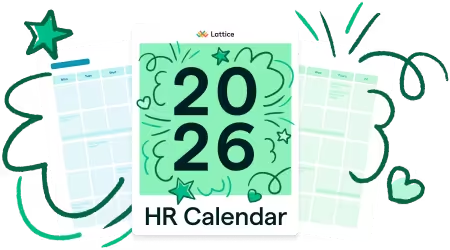Lattice
People Platform
Improve manager productivity, simplify people operations, and act on employee insights with an AI-powered platform.

Featured
Performance Management
Identify your top performers, and equip every person to succeed with their work.
Learn more about Performance
⯈
⯈

Engagement
Collect feedback, discover insights, and implement programs that improve productivity and retention.

AI
Make your employee experience more human

Goals
Accelerate growth by connecting individual achievement to organizational success.

Grow
Increase growth and engagement with Lattice’s dynamic employee development tools.

Compensation
Reward and motivate your employees by connecting compensation to performance.

Analytics
Maximize performance, productivity, and engagement across your workforce with advanced people analytics.

Your people are your business
Ensure both are successful with Lattice.
⭐️
on G2.com
⭐️
on Capterra









